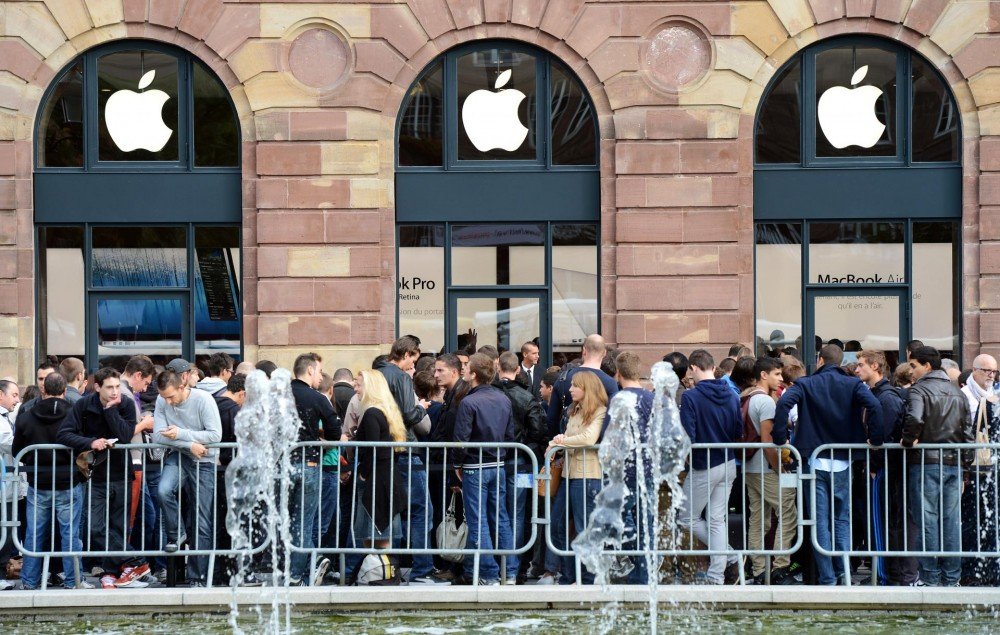Internal vs External Customer: Key Differences Every Business Owner Must Know
Customers play a crucial position in today’s economic times. Customers are the decisive factor in the success or failure of the business. That is why many businesses affirm that “The most valuable thing of our company is the CUSTOMERS”.
Therefore, every business is extremely focused on taking care of its customers. To do this well, you need to know the different types of customers to take the right steps.
This article will give you a closer look at the Internal vs. External Customer and give you Key Differences between these two types of customers so you can better distinguish.
The Definitions of Internal and External Customer
Customers are individuals or organizations whose marketing efforts are directed at them. They are the ones who have the power to make purchasing decisions. Above all, customers are those who inherit the characteristics and quality of products or services.
Understand the definition and nature of the customers is the first requirement for every business owner or manager. This will make it easier for you to come up with development plans in the right direction, and more easily accepted by customers.
Internal Customer

Internal customers are all members or divisions of the business that consume the products or services provided. Especially, every internal customer is a part of the company. According to this concept, the entire production process or service provision of an enterprise is essentially a supplier-customer chain, in which each object is both a supplier and a customer.
Identifying internal customers is special to the business because the product or service is of high quality depends a lot on the people who create it. More than anyone, the company’s staff is the person who knows best about the product - service. They will be the ones to help promote your brand well.
Company employees also easily become the most loyal customers. Therefore, expanding relationships with employees is essential.
External Customer

External Customer is objects located outside the enterprise that have needs to purchase goods of the production organization business. Unlike internal customers, external customers are not involved in the company. ( So, a multi-channel ecommerce software is essentail for your business to deal with them). They are people you can trade within a person or over the phone. Include:
- Personal
- Business or business person (supplier, bank, competitor)
- State agencies, voluntary organizations
Business owners need to determine whether these are potential, traditional customers, or those who directly bring in profitable revenue for the business. So business owners need to have customer care measures to attract and retain customers to use the products you provide.
Expanding your customers’ perception, including your employees in your company, will make a significant step towards a complete level of customer service.
Within the company, sometimes you are a customer, sometimes you are a service provider. For example, an employee might ask you to print a document. In this case, you are the service provider because you give them what they need. However, 10 minutes later, you can go to the employee and ask for help with something else, now you play the client’s role.
Read more:
- Customer engagement for eCommerce
- Top 10 Best Shopify Customer Service Agencies
- 9 Effective Customer Retention Tactics
- Understanding Customer Value
Internal vs. External Customer: 3 Main Key Differences
Connection with The Company
The biggest difference that we can tell between the internal customer and the external customer is the company’s connection. To be clear, internal customers are people who have a direct relationship with the company, and external customers are not. Implementing internal customer service plays a crucial role in ensuring effective communication and collaboration within the company, which can lead to better relationships with internal customers.
As seen in the definition, internal customers are people who work in different departments and branches of the business. In other words, they are employees in the company who directly produce and come into contact with the product. More than anyone, the company staff is the person who knows the best about the product; they will help to advertise your brand well. Therefore, we can say that the internal customer is directly related to the company.
Otherwise, external customers are objects located outside the business that need to purchase the business’s goods that organizes production. Hence, we can see that there is no direct relationship between external customers and the enterprise.
Information About The Product

Internal customers always have more information about products than external customers because they are directly related to the company, especially the people who manufacture those products themselves.
An internal customer will know everything about the product like:
- Price
- Styles, colors, or patterns are available
- Origin of the product
- Anything special in the production process
- How to use the product
- Distribution and product delivery service, warranty, and repair information
Besides, internal customers can also know confidential information about enterprises’ products that the external customers do not know.
Price and Bargain
As an employee of the company and a contributor to the company’s development, internal customers often get the company’s products at low prices. Besides, with a clear understanding of the product and the information they have, they can fully understand the product’s value and bargain reasonably.
On the other hand, external customers often buy the company’s products at a higher price because they are pure customers with no direct relevance and no work for the company. Therefore, they are not entitled to benefits as an employee of the company. Besides, they may not be able to grasp much information about the product so they will have difficulty bargain and easily accept the price offered by the seller.
Example of Internal and External Customer
Today, many businesses turn to see their employees as “internal customers”. It’s said that “Employees are the brand ambassadors of the company. The staff is the factor that makes the difference and brings the competitive strength to the business”.
Apple’s story is typical. Apple is a great example of success when it comes to delivering good internal and external customer experiences. The corporate culture they put out is innovation, originality, and expertise. To promote this culture, even the initial selection of candidates and initial training is made very carefully by Apple to ensure that every employee - especially those who work directly with customers - expresses itself, verify the business image. Every customer who comes to the Apple Store knows that their salespeople are experts in their products and give good feedback to the company.

The reason businesses need to learn from Apple experiences because we can see that the number of customers using products from the company is very large. In addition to that, the strategies in business characterize. Apple does not have any other mix that has helped them have a strong foothold in the market today. And more than anyone, Apple understands how vital both internal and external customers are to a business.
Apple does not appreciate the value of advertising through Google or Facebook because they think this is a very easy channel to create a feeling of boredom for customers. And in fact, the company mainly operates on two strategies: distributing products through exclusive brand ambassadors and positive reviews on the mass media.
Businesses should not ignore customers’ emotions, and Apple is completely focused on the emotions of the users, including the employees in the company. Because they understand emotion easily manipulates other actions, creating a customer feeling comfortable, happy, and satisfied will certainly not leave you.
Apple has been a testament to customer-based success over the years. So, businesses should try to apply some of the most suitable measures to create a difference for the company’s customers and efficiency.
Internal vs. External Customer: Who’s Come First?
Tom Peters, who is considered as the Red Bull of management thinkers, said: “Paradoxically, to achieve emotionally connecting customer experience, employees come first, ahead of the customer.”
Here, I agree with this point of view. This is not to say that internal customers are more important than external ones. Both groups of customers are extremely important to the business. However, internal customers will be the group that should be given priority first because the quality of their experience will affect the quality of the external customers’ experience.

If your office staff seldom deal with outsiders and are not interested in the lives of outside clients, you can immediately feel that every activity in the company does not seem to have any impact on outside customers. But if you look at the broader picture, you will see that every employee plays a crucial role in satisfying customer needs. Every communication with internal customers is an important link in a chain of different events that end at the same point: satisfying external customers.
About two years ago, the Wall Street Journal published an article under the headline “Poorly treated employees will treat customers the same way”. Many managers do not realize that their employees are internal customers, and the quality of service the company provides to customers is a direct reflection of how managers behave. Hence, you need to treat your staff as one of your most important customers. Thanks to that, you focus not only on what your employees can do to make your business move forward but also on what you can do to make their job easier.
Somewhere in the business, there is a close relationship between employee emotions and customer feedback. Customers feel happy only when employees in the business have similar feelings and vice versa. So what is the secret to tightening this link?
Maintaining a good relationship with customers is one of the ways to promote effective business. And more than anyone in the business, employees are the ones who understand and interact with customers the most. Therefore, their emotions will become prerequisites to using the product.
When employees are happy, customers will respond with goodwill to increase sales and bring more customers in the future.
Related posts:
- What is Market Orientation?
- 10 Persuasive Behavioral Segmentation Examples & Methods
- STP Marketing Model
Conclusion
This article helps you better understand internal vs. external customers. You can also rely on the key differences we provide to differentiate between these two concepts and create compelling customer care strategies.
If customers are the ones who generate revenue to help the company operate and grow, employees are the ones who attract and retain customers. How can businesses bring satisfaction to customers if those who directly create satisfying customer experiences feel dissatisfied? Wanting employees to stick and wholeheartedly, businesses must respect them by building a welfare policy and working environment that satisfies them.
New Posts






